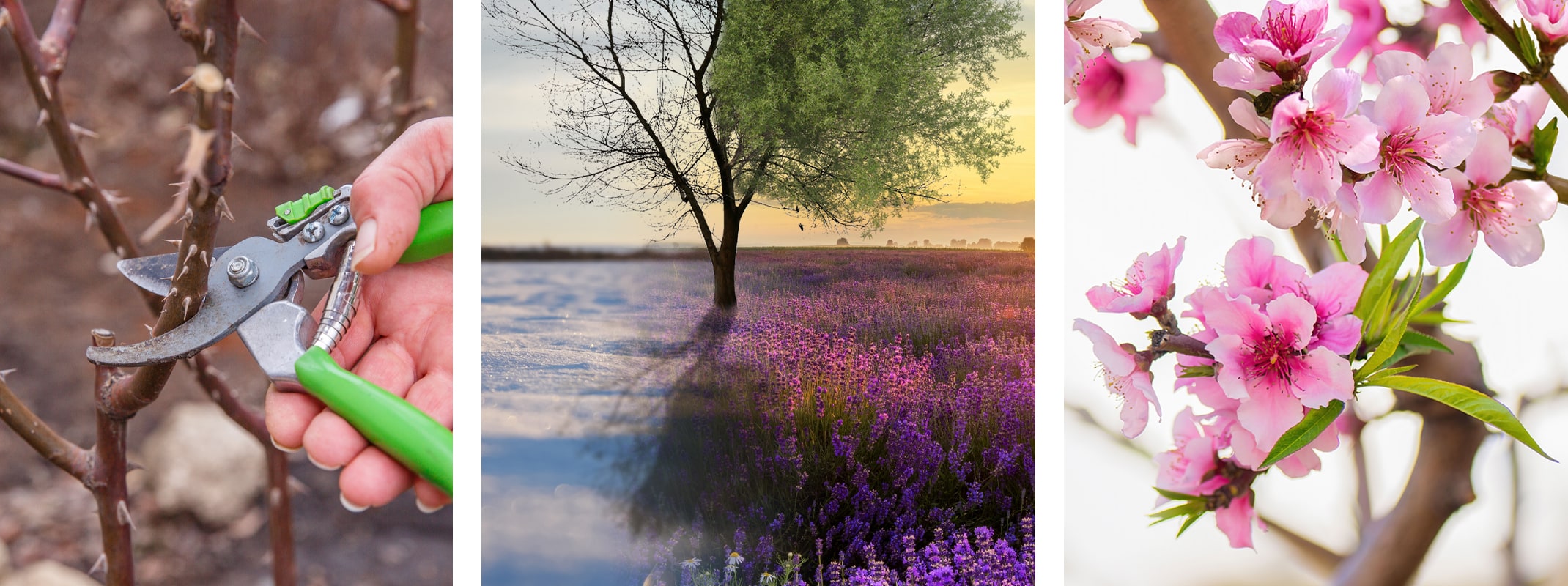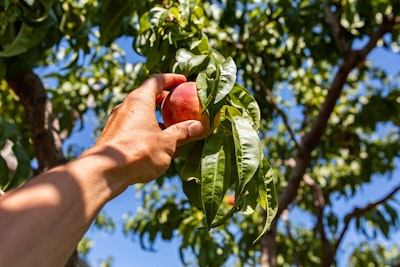 Back to the Be Inspired Blog
Back to the Be Inspired Blog

While They Are Sleeping: Fruit Tree and Rose Care
Winter is a quiet season in the garden, but it’s also the perfect time to give your fruit trees and roses some TLC. While they’re taking their winter nap, you have a golden opportunity to get them ready for a year of healthy growth, gorgeous blooms, and bountiful fruit. Let’s walk through a few simple steps you can take this December and January in the Bay Area to keep your garden favorites thriving.
Fruit Tree Care: Dormant Spray and Pruning
Dormant Spray Treatments: Vow to Prune and Protect

Fruit trees need care during their dormant season to ward off pests and diseases. Dormant sprays are an essential part of this process, targeting insects and fungi before they have a chance to take hold. Here’s how to approach dormant spraying:
Application Schedule:
- First Application: Thanksgiving
- Second Application: New Year’s Day
- Third Application: February 1st
If you missed the first application, don’t panic but do apply the next. Just make sure each application is 30 days apart, especially for peaches and nectarines, and while the tree is completely leafless and before buds begin to swell. This timing is crucial for effectiveness.
Insect Prevention
- Bonide All Seasons Horticultural Spray Oil:

 This organic spray is ideal for controlling insect pests. It’s a paraffinic oil that can be used as a dormant spray or a delayed dormant spray. Available in both ready-to-use (RTU) and concentrate options, it’s a versatile tool for winter tree care.
This organic spray is ideal for controlling insect pests. It’s a paraffinic oil that can be used as a dormant spray or a delayed dormant spray. Available in both ready-to-use (RTU) and concentrate options, it’s a versatile tool for winter tree care.
Fungus Prevention
- Monterey Liqui-Cop:
 This liquid copper fungicide prevents common diseases such as peach leaf curl, shothole, and brown rot. It’s available in concentrate and ready-to-spray (RTS) formats.
This liquid copper fungicide prevents common diseases such as peach leaf curl, shothole, and brown rot. It’s available in concentrate and ready-to-spray (RTS) formats. - Bonide Liquid Copper Fungicide: With 7% copper sulfate, this product organically treats issues like black spot, downy mildew, and rust. Apply 24 hours before horticultural oil sprays and ensure application is completed before rain or buds break.
Pro Tip: Copper fungicide sprays should always be applied early in the day, without wind, and at least 24 hours before expected rain.
Pruning Your Fruit Trees
Pruning during dormancy allows you to see the tree’s structure clearly and remove dormant buds, strengthening the remaining ones. Follow these three steps to prune effectively:
- 1. Clean Up: Remove dead, damaged, or diseased wood, suckers from the base, and vertical watersprouts. Prune branches back flush to the limb they’re growing from.
- This Out: Boost light and air circulation by removing downward-growing branches, those that grow toward the center, and any crossing branches. Aim for evenly spaced branches with 6 to 12 inches of air space around each.
- 3. Slight Trim: Cut back 20%-30% of last year’s growth. Look for the wrinkly ring of bark that marks where last year’s growth ends. Prune just above a bud facing the direction you want the branch to grow.
Rose Care: Winter Preparation for Stunning Blooms
Pruning Your Roses
Winter pruning is essential for roses, as it encourages healthy growth and vibrant blooms in the spring. The Bay Area’s mild winters make January an ideal time to prune. Follow these steps to keep your roses in top shape:
- 1. Remove Deadwood: Cut away any dead or damaged canes, as well as canes that show signs of disease. Use clean, sharp tools to make smooth cuts.
- 2. Shape the Plant: Aim for an open, vase-like structure that promotes air circulation. Remove crossing canes and any that grow toward the center of the plant.
- 3. Cut Back: Trim hybrid tea roses and floribundas to about 18 inches tall. For climbers, focus on thinning and shaping rather than drastic cuts.
Preventing Pests and Diseases
- After pruning, apply a dormant spray such as horticultural oil to roses to smother overwintering pests.
- Consider using a fungicide like Bonide Liquid Copper to prevent common fungal issues.
Mulch and Fertilize
Add a fresh layer of mulch around your roses after pruning to protect the roots and suppress weeds. Hold off on fertilizing until early spring, just before new growth begins.
The Benefits of Winter Care
Winter is a quiet time in the garden, but the care you provide during this season will pay dividends. For fruit trees, you’ll enjoy healthier growth, reduced pest and disease pressure, and an abundance of fruit. For roses, winter pruning and spraying ensure strong canes and gorgeous blooms come spring.
By dedicating time to your garden while it sleeps, you’ll set the stage for a thriving, beautiful landscape in the months ahead.

